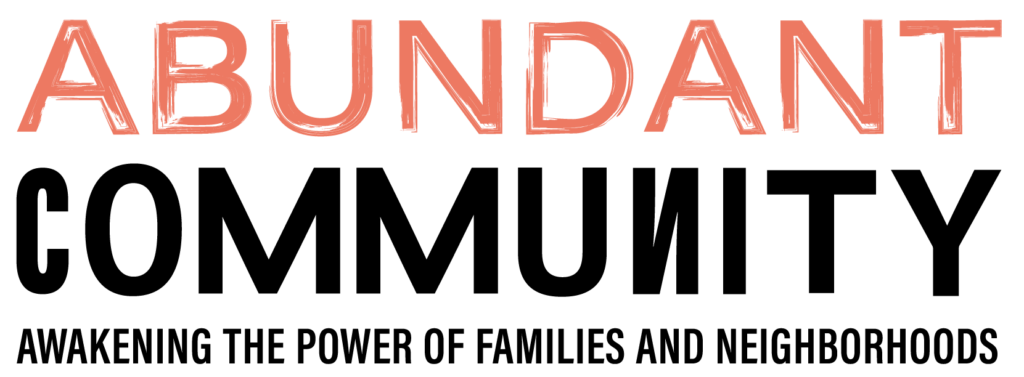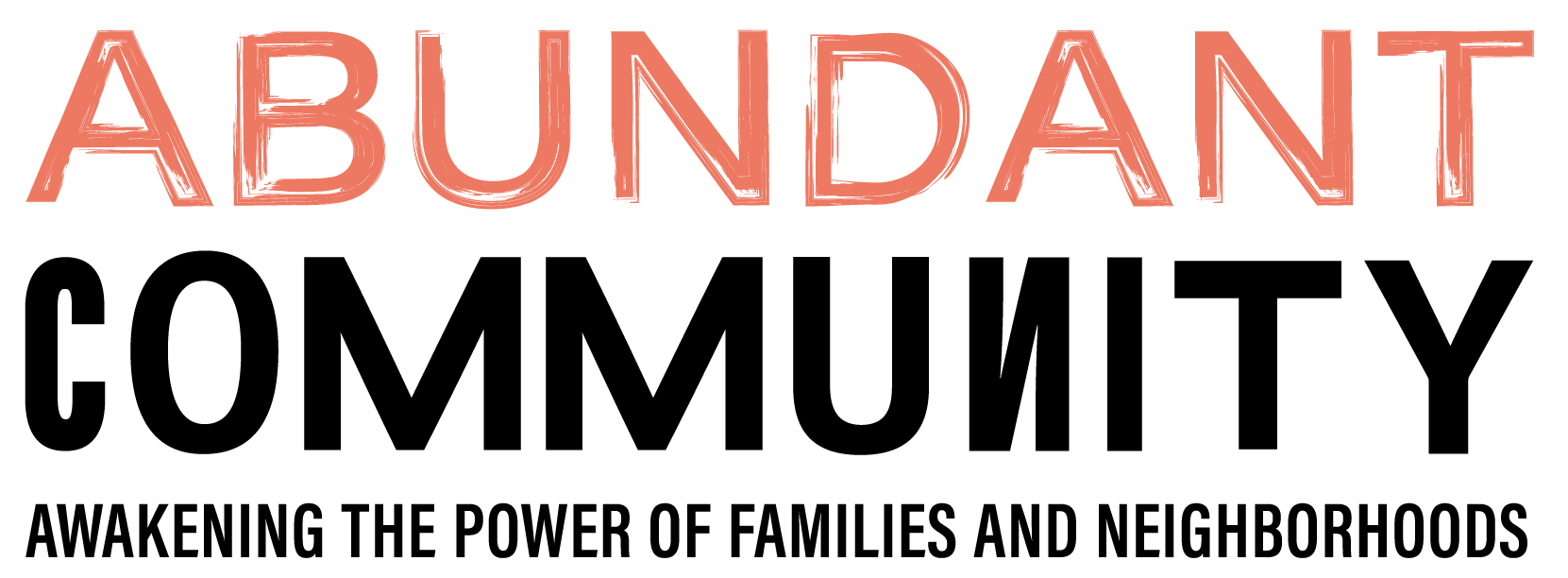Building strong communities is not easy. In Bowling Alone, Robert Putnam documents the decline of community life in North America. He blames poverty, suburbanization, television, and more time spent at work. Others have added fear, mobility, globalization and increased professionalization and specialization to the list of culprits. Even so, my 37 year background in community building has taught me some simple rules of engagement that still hold true today.
Have Fun!
Of all the forces that are eroding community, Putnam claims that television is the greatest threat. That may be true, but if television is our main competition and we’re losing, we’re doing something terribly wrong. It shouldn’t be that difficult to make community more compelling than television.
Cesar Cala, a community activist in the Philippines and now in Calgary, told me, “The problem is those GD activists.” “GD activists?” I inquired. “Yes,” he said, “the grim and determined.”
We all know those sour activists who act like civic engagement is their cross to bear. They love to complain. Who would want to get involved with them? The key is to make community life fun again. As my friend Jeff Bercuwitz says, “Why have a meeting when you can have a party?” After all, the purpose is to get people involved and not to see who can endure the most suffering.
Start Where People Are
Saul Alinsky, who is often described as the father of modern community organizing, complained that too many activists start with the world as they would like it to be rather than the world as it is. If you want to get people engaged, he advised, you need to start where they are. This is true on several levels.
First, the closer the action is to where people live, the more likely they are to get engaged. While there will undoubtedly be a larger turnout for a citywide event, there will never be a higher percentage of participation than if the meeting (or party) is held at the block level. A more localized event makes transportation and child care much easier. It also gives people a greater sense that their participation is important. After all, if they don’t attend, who will? And, if they aren’t present, they might be in trouble with their neighbors.
An event at the block level makes transportation and child care much easier. It also gives people a greater sense that their participation is important.
Second, if you want to get people involved, you need to be cognizant of their language and culture. This seems obvious in working with immigrants, but even when communicating with people who speak the same language as you, it is important to use words that are familiar to them. Too often, we use jargon or acronyms that comprise a sort of secret code known only by members of a particular profession or by hard core activists. Not only do we fail to communicate, but those whom we are trying to reach come to believe that they lack the expertise required for participation.
Third, in trying to recruit people, it is important to start with the networks to which they already belong. Too often, we think that people aren’t organized simply because they don’t belong to our organization. In fact, just about everyone belongs to at least one network, either formal or informal. They likely don’t have time to join yet another group. Besides, they have developed relationships within their existing network that make them comfortable.
It is especially difficult to recruit people whose age, income, ethnicity or other characteristics set them apart from the existing members of your organization. If you want to create a multi-cultural community effort, it generally works best to identify and build alliances with the key networks involving people who are underrepresented in your membership. These local networks could be centered on neighborhood, culture, faith, education, business, recreation, environment, history, art, crime prevention, service, a hobby, or something else. There are literally dozens of networks in every neighborhood. When these networks are aligned, the community can exercise tremendous power.
Fourth, we need to focus on people’s passions. Too often, we try to convince people to care about our cause—what we are passionate about or what we are paid to promote. When people don’t join us, we call them apathetic. In fact, no one is apathetic. Everyone cares deeply about something. People will get involved to the extent that we can tap into their passion. The key is to start, not with an answer or with a program, but with a question: “What is your dream or what keeps you up at night?”
Too often, we try to convince people to care about our cause. When people don’t join us, we call them apathetic.
Finally, in order to start where people are, you need to know their call. I learned this lesson from John McKnight, Director of the Asset-Based Community Development Institute. McKnight taught me that different kinds of people respond to different kinds of calls, just like ducks. Too often, though, we only use the loon call and wonder why only the loons show up.
Typically, the meeting call is the one that we use. For most people, this is the worst possible call. They’re afraid to come to the first meeting because they know they will be on the sign-in sheet and be sentenced to meetings for the remainder of their life. Those who have come to meetings usually see few if any results. And, many people are shy. They may attend meetings because it is the only option they are given, but they don’t feel like they are making a contribution.
In fact, everyone will get involved if they hear their call. Most people respond to the social call of community meals, parties and festivals. Shy people may respond to the volunteer call as a tutor or mentor. And, everyone seems to love the project call. With projects, unlike with meetings, people make a short-term commitment and they see results. There’s a role for everyone—young people, elders, people with disabilities, architects, artists, construction workers, etc. The more varied the calls they utilize, the more broad-based and inclusive the organization will be.
Different kinds of people respond to different kinds of calls, just like ducks. Everyone will get involved if they hear their call.
Once people are connected, then they are more likely to go to some meetings because we need a few of those as well. But, we tend to lead with the meetings and wonder why the same people keep turning out. We’re often trying to engage community before we’ve built it.
Strive for Results
While it is important to start where the people are, it is crucial not to leave them there. This is especially true of people who have felt powerless and are getting involved for the first time. They need to see results if they are going to stay involved. So, you probably don’t want to start by working on world peace or global warming. Alinsky talked about the importance of focusing on issues that are immediate, concrete and realizable. Once people have a sense that they can make a difference, they will be more ready to tackle the larger issues.
Utilize People’s Strengths
Activists tend to focus on the problems in their community. As a result, they look outside the community for the solutions and overlook the abundant assets that exist in every neighborhood and in every individual. Everyone has gifts of the head (knowledge), heart (passion), and hands (skills). Identifying ways in which people can contribute those gifts to the community is a wonderful way to get them engaged. This is especially true for people referred to as at-risk youth, old people, non-English speaking, and homeless and disabled individuals. When we label people by their needs, they become clients in a service system, and when we focus on their gifts they become citizens of our community.
When we label people by their needs, they become clients in a service system, and when we focus on their gifts they become citizens of our community.
Celebrate Success and Recognize Caring Neighbors
Getting results is important, but much of the potential value is lost if you fail to celebrate your success and thank those who made it possible. Neighbors need to know that people like themselves were responsible. The sharing of such stories inspires people about what is possible when they work together and build on their assets. Social media presents us with a wonderful opportunity to tell the positive stories that are seldom found in the mainstream press.


